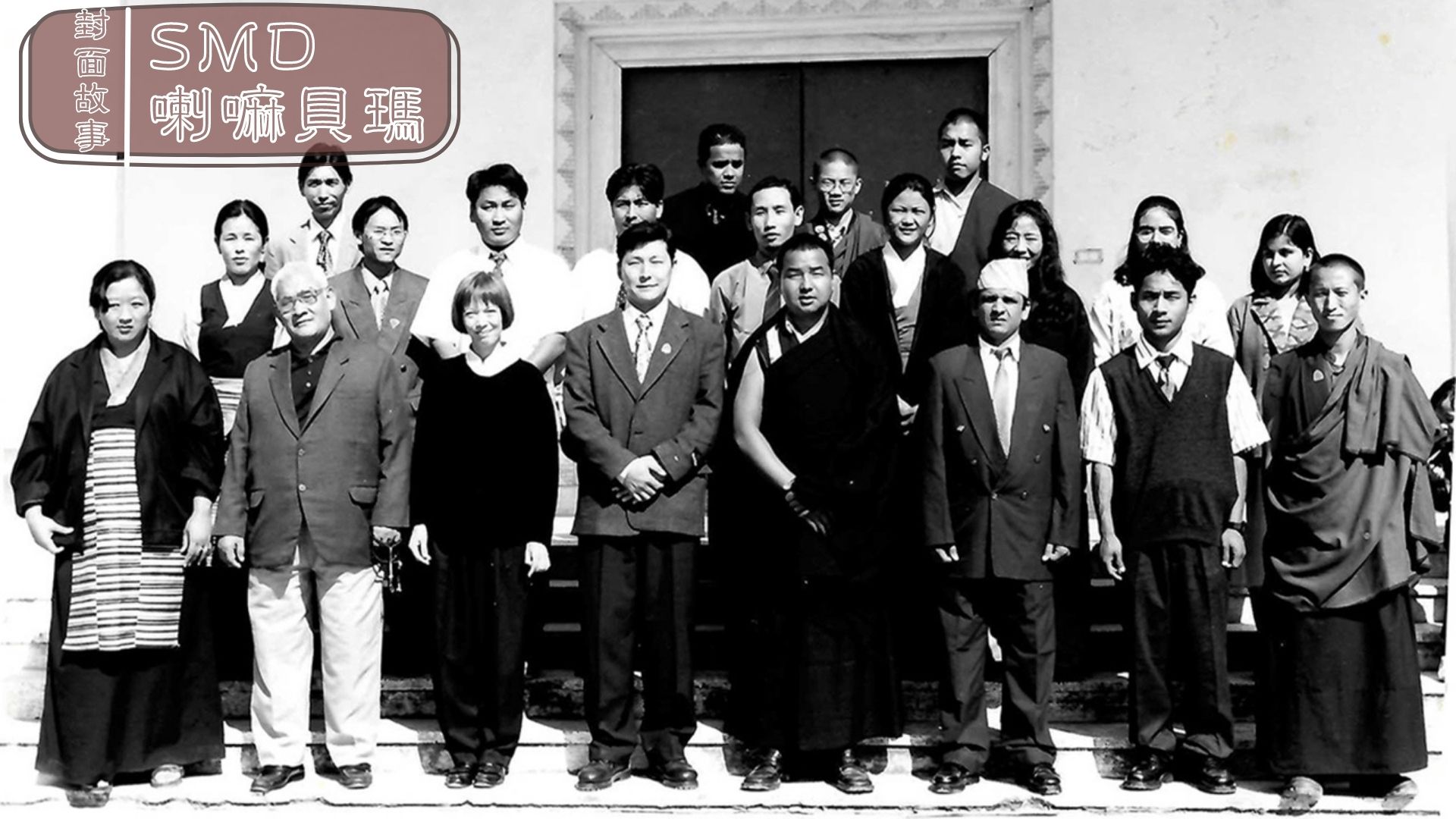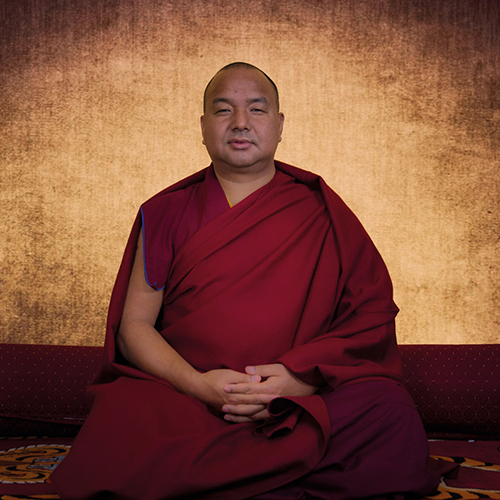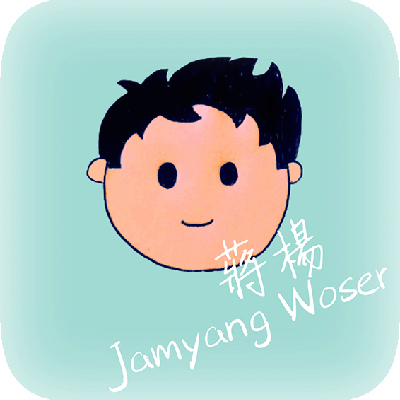【COLUMN∣JAMYANG 】Dungse Lama Pema: My heart will always remain with the school

▲Lama Pema (fourth from right, front row) and SMD staff members. Lama Pema offered a high salary to Lhawang (on Lama Pema’s right), who graduated from an American university, to become the director of the school in hopes of improving the quality of education.
Under the direction of Khenchen Thrangu Rinpoche, Dungse Lama Pema cautiously took on the responsibility of becoming the principal of SMD school. During his service, Lama Pema was dedicated to establishing school regulations and a system of governance; he hired qualified teachers, started new courses like computer lessons, and worked hard to find sponsors. Although he subsequently left SMD for Thrangu Monastery in Canada after his tenure, he still kept the SMD students in mind. With much effort, Lama Pema established the Namo Buddha Foundation, which finds sponsors for one hundred and fifty SMD students annually. During the interview, he emphasized, “My heart has always been with the school, even though I am not there anymore.”
Interviewee: Dungse Lama Pema Rinpoche
Interviewer, Tibetan to Chinese translator: Ani Jangchub Drolma
Chinese to English translator: Jamyang
English editor: Stacey
Picture credits: Dungse Lama Pema Rinpoche
**Dungse Lama Pema Rinpoche is abbreviated as Lama. Ani Jangchub Drolma is abbreviated as Jangchub.」。
Everything is difficult at the beginning
Jangchub: First of all, please share with us how you became the principal of SMD.
Lama: I consulted Thrangu Rinpoche immediately after completing the three-year, three-month retreat in 1997. Rinpoche told me, “Next, you need to become the principal (of SMD).”
I was rather anxious the moment when I heard this. I felt that I lacked the qualifications and experience, and that I would not be able to fulfill the responsibilities. Later on, I looked at it from another perspective: I was once a student, so I was able to empathize with their situation and various pressures. I eventually decided to take on the position of the principal.
Jangchub: How did you manage the school operations when you became the principal?
Lama: I learned about SMD’s situation from the previous principal. There were a total of one hundred and eight students at that time. Half of these students were from underprivileged families, who came from remote Himalayan mountain regions for their education; the other half had parents who paid for their school fees. The first problem I encountered was that tuition-paying parents requested for better food at the school, however the school was short on funds and manpower then. When I became the principal, there was a foreigner, Nancy, who helped to find sponsors and recruit staff members. Subsequently, she had to leave and keeping the school operational became difficult. It was at that moment when we met Shirley. She had just come to Nepal from Japan. I asked her if she could come to work at the school. We needed someone to look for sponsors, as keeping the school up and running was becoming incredibly challenging.
It was from that moment on that I realized the importance of establishing a database for sponsors. Choepel, the secretary, and I created a form that clearly records the personal information of each sponsor, the amount of money they sponsored, the name of the student being sponsored, the purpose of the funds, and so forth.
To look for sponsors, I followed Thrangu Rinpoche to the U.S.A., Canada, and other countries all around the world. After almost having circled the entire globe, we finally raised around one hundred and ten thousand Nepalese rupees. From this fund, I purchased eleven desktop computers and started computer lessons at SMD. The students were extremely excited! They had never even seen a computer before, let alone been able to learn how to use one.
Meeting the needs of students
Jangchub: What were your first impressions of SMD? What were you feeling at that time? Is there anything in particular that made a lasting impression on you?
Lama: When I initially stepped onto the campus, my first thought was, “I need to establish a proper academic and educational system at the school!” To achieve this, however, we required sufficient funds. Without proper funding, we would not be able to hire good teachers, and therefore the academics would not improve. As a result, we spent significant time and energy on fundraising, and eventually obtained enough to upgrade the quality of the school faculty.
‧
Improving the quality of the faculty
In the past, our Nepali, Tibetan, and English teachers were not properly qualified. After collecting enough funds, we went to Nepali universities to recruit graduates with teaching certificates to become the fresh foundation of SMD’s Nepali language faculty. To find Tibetan teachers, we went all the way to the University of Tibetan Studies in Varanasi, as their graduates were all qualified teachers. Thus, in order to achieve our first goal of improving the academics, we sought out the best teachers from all places and recruited them to join us at SMD.
‧
Learn Tibetan and preserve Himalayan culture
At the same time, we started establishing school rules and regulations. Students were required to perform virtuous deeds, not steal, and to be good people. Thrangu Rinpoche’s goal for establishing SMD was that children from the Himalayan regions can preserve their cultures. This requires that their mother tongue and religion remain intact. Tibetan is the primary local language in the Himalayan regions, yet local students usually speak Nepali to one another. As a result, the school particularly encourages students to speak more Tibetan and to learn the language well. Only in doing so will they be able to understand their traditional Himalayan culture and thereby help preserve it.
Afterwards, we started inviting monastics to the school to teach meditation, including the Chenrezig practice.
‧
Visiting the emergency room at night
After improving the faculty quality and establishing school rules, the next challenge we faced was health care. Occasionally, we had to take students to the emergency room at one or two o’clock in the morning. I myself would drive sometimes and look after them. Because Nepal’s hospitals have very limited resources, there were no beds for those accompanying the patients, so I had to sleep on the floor. I felt that my personal hardships were unimportant, as long as the children could make a quick recovery.
In actuality, the various improvements we had made and the care we had shown to students was simply just following the lama’s instructions. We should be carrying out our responsibilities, and it was also an opportunity to accumulate merit. I believe the reason that I am able to smoothly carry out dharma activities, without many obstacles, results from the effort I had devoted towards the school.
Setting up a Foundation to support SMD
Lama: I was the principal of SMD for three years, from 1997 to 2000. In 2008, I had to leave the school for Thrangu Monastery in Canada. However, the school has always been on my mind. If I never took up the principal position, I would probably neither understand the school’s situation, nor form a connection with the students. Since I was once the principal, I had the chance to establish a close relationship with the teachers and students, and am still deeply connected to the school.
After I had arrived in Vancouver, I actually felt quite a mix of emotions when I saw how sponsors treated the monastics. Many buddhists of the Tibetan, Southern, and Chinese traditions are rather diligent about supporting monks and nuns. In comparison, it was much more difficult to find sponsors for lay students and the school. As a result, we established the Namo Buddha Foundation in Canada to support the students of SMD. From 2008 until now, we have been continuously finding sponsors for one hundred and fifty SMD students annually.
Currently, there are six Westerners and one Chinese staff member working at the Foundation. This is mainly because Westerners are more dedicated and involved in the promotion of education. Each member of the Foundation continues to work very hard at finding sponsors.
‧
Please help our students instead
During this process, I remember very clearly that Rinpoche had some affluent sponsors who would take us out to high-end restaurants. A meal there would cost around eight hundred U.S. dollars. I would tell them, “We don’t need to eat that well. An eight hundred dollar meal is equivalent to the annual tuition and living expenses of a SMD student. Please use this money to support the students instead.”
Although I had left the school and given my position to someone trustworthy, my heart has never left SMD. No matter where I am, I always worry about the school. Since SMD is now much bigger, with the student population ranging from five to seven hundred, we require more funds and sponsors to help maintain it.
‧
Education transforms lives
There are many orphans among our SMD students. Even though they are just beginning their journeys, it is as though they do not have much hope for the future. However, after they have acquired an education and developed their skills at SMD, they are able to improve their lives. As far as I know, currently, around one hundred students have been able to obtain international scholarships due to their outstanding academic performance. They have studied at universities in Vancouver, Switzerland, the U.S.A., Guangdong, Japan, and so forth. I deeply believe that education changes the lives of children. This is completely due to the kindness of Thrangu Rinpoche, and the hard work and dedication from the SMD staff.
‧
My deepest gratitude for Shirley
Shirley Blair is a person who has dedicated her entire life to SMD, and I am extremely grateful for her. We share our thoughts over the phone and encourage each other even to this day. Managing a school requires enormous dedication; in particular, Shirley is a Canadian who is living in a foreign county. Due to cultural differences, there were times when the monastics did not listen to her opinions, so we would frequently talk over the phone to motivate each other. I once told her, “We will all become old one day, and when you do retire and return to Canada, you can live and practice here at our monastery. You do not have to worry about food or housing. We will take good care of you in the same way that you have taken care of our school.”
‧
The toughest challenge is ourselves
Jangchub: What was the biggest challenge you faced during your three years as principal?
Lama: As the principal, there were certain rules and regulations I had to enforce in order to maintain the decorum of the school. Before teaching rules to someone else, I had to be able to put them into practice myself. There were numerous challenges while managing the school; the academic and personnel affairs were very complicated. However, no matter how challenging it became, we had to succeed because it is the lama’s instruction. Sometimes when I did encounter more serious difficulties, I would consult the opinion of Thrangu Rinpoche. So for me, the biggest challenge was actually myself. I had to carry out my responsibilities well, and put the school rules into practice before I could educate others.
My heart is always with the school
Jangchub: What was your reason for leaving SMD? What did you feel at that time?
Lama:In 2000, the 17th Gyalwang Karmapa left Tsurphu Monastery and arrived at Dharamsala, India. This was a huge event for us. Since Thrangu Rinpoche needed to meet His Holiness urgently, I was lucky to be chosen as his attendant. As far as I know, an attendant needs to take special care in their appearance; they have to ensure each item of monastic attire is worn accordingly. I stayed in Dharamsala as an attendant for fifteen days. When we returned to Delhi, Rinpoche told me, “You wear your robes very well; you look rather dignified in them. You should become a discipline master.” I thought Rinpoche’s comment was not at all serious, as I had just completed my post as a principal; a new task was usually not assigned that soon. When I arrived back in Nepal, I realized Rinpoche was being completely serious—I was appointed as the discipline master of the monastery.
Since I had already established such deep connections with the teachers and students at SMD, I was rather dazed for a few days when I suddenly had to return to the monastery. I did not know what I was doing, and even felt a little overwhelmed.
(*According to the rules of Thrangu Monastery, each monastic member is required to switch posts once every two years, regardless if one is a discipline master, principal, monastery manager, steward, and so forth. Rinpoche’s intention is to allow each person to experience different occupations and responsibilities and grow as a result.)
Strive to preserve Himalayan culture
Jangchub: Is there something you would like to say to the staff and students at SMD?
Lama: I would like to take this opportunity to encourage the teachers of SMD to work hard at the preservation of Himalayan culture. Most of the teachers I worked with have either left or are retired. I urge each single staff member at the school to work hard and take their responsibilities seriously, because we are carrying out the instructions of the lama. We Tibetan buddhists believe, “If you are able to follow the lama’s instructions and therefore delight them, the buddhas and bodhisattvas will be extremely pleased too. This is also our opportunity to accumulate merit.”
Students, please remember this: Thrangu Rinpoche founded a school like this in order for us to preserve and propagate our culture. Most of us are Tibetan buddhists, and the root of our culture is our mother tongue, Tibetan. I hope each of you will be able to preserve your mother tongue by learning it well. Doing so will help you learn more about the texts, philosophies, and knowledge within Tibetan buddhism. Therefore, students, do not let down the painstaking efforts of the lama; you must preserve your culture.
I am also very grateful to every single sponsor of SMD. The school is able to operate due to your assistance. I firmly believe that not a single dollar from your donations will go to waste. Even if everyone only pitches in a little bit, it becomes like drops of a vast ocean that will never dry up. We must continue with our efforts of preserving Himalayan culture, and the lineage of Tibetan buddhism.
Finally, I need to emphasize again that even though building monasteries, stupas, and dharma centers are considered excellent meritorious activities, the key to preserving Tibetan buddhist culture lies in learning Tibetan. Doing so will help preserve and disseminate the contents of the buddhist texts, many of which were once translated from Sanskrit. Because we have learned the dharma, we have opportunities to benefit others and spread dharma around the world, establishing dharma centers in Europe, the U.S.A., Taiwan, Hong Kong, and so forth. Therefore, I urge every student to strive hard at learning Tibetan. Only by doing so, we are able to preserve the teachings—the roots of Tibetan buddhism. Thank you.
 |
Dungse Lama Pema Rinpoche (Abbot of Thrangu Monastery Canada) Born to a family belonging to the lineage of Guru Chowang, one of the five great Nyingma tertons, he entered Thrangu Tashi Choling Monastery at the age of nine. He took complete ordination vows and received numerous teachings and empowerments of the Kagyu lineage from the Very Venerable Thrangu Rinpoche, and also completed a three-year retreat under Rinpoche’s guidance. After retreat, he also received the empowerments for his family lineage of Guru Chowang. Upon completion of studies in buddhist philosophy and rituals, under the instructions of Thrangu Rinpoche, he became the principal of Shree Mangal Dvip School, and was later appointed the discipline master for Thrangu Tashi Choling Monastery. In 2003, Lama Pema was sent to Vancouver in Canada to establish Thrangu Vajra Vidya dharma center. The very next year, he started overseeing the construction of Thrangu Monastery Canada, which took seven years to complete. Soon after, he was appointed the head resident lama; his responsibilities include giving dharma teachings and overseeing the well being of the monastic and lay communities at the monastery. |

JAMYANG 蔣揚
A native of Taiwan, Jamyang grew up in Singapore and gradually developed an interest in studying languages. He is currently learning Tibetan.
出生在台灣的蔣揚,在新加坡長大,並對語文感到興趣,目前正在學習藏文。